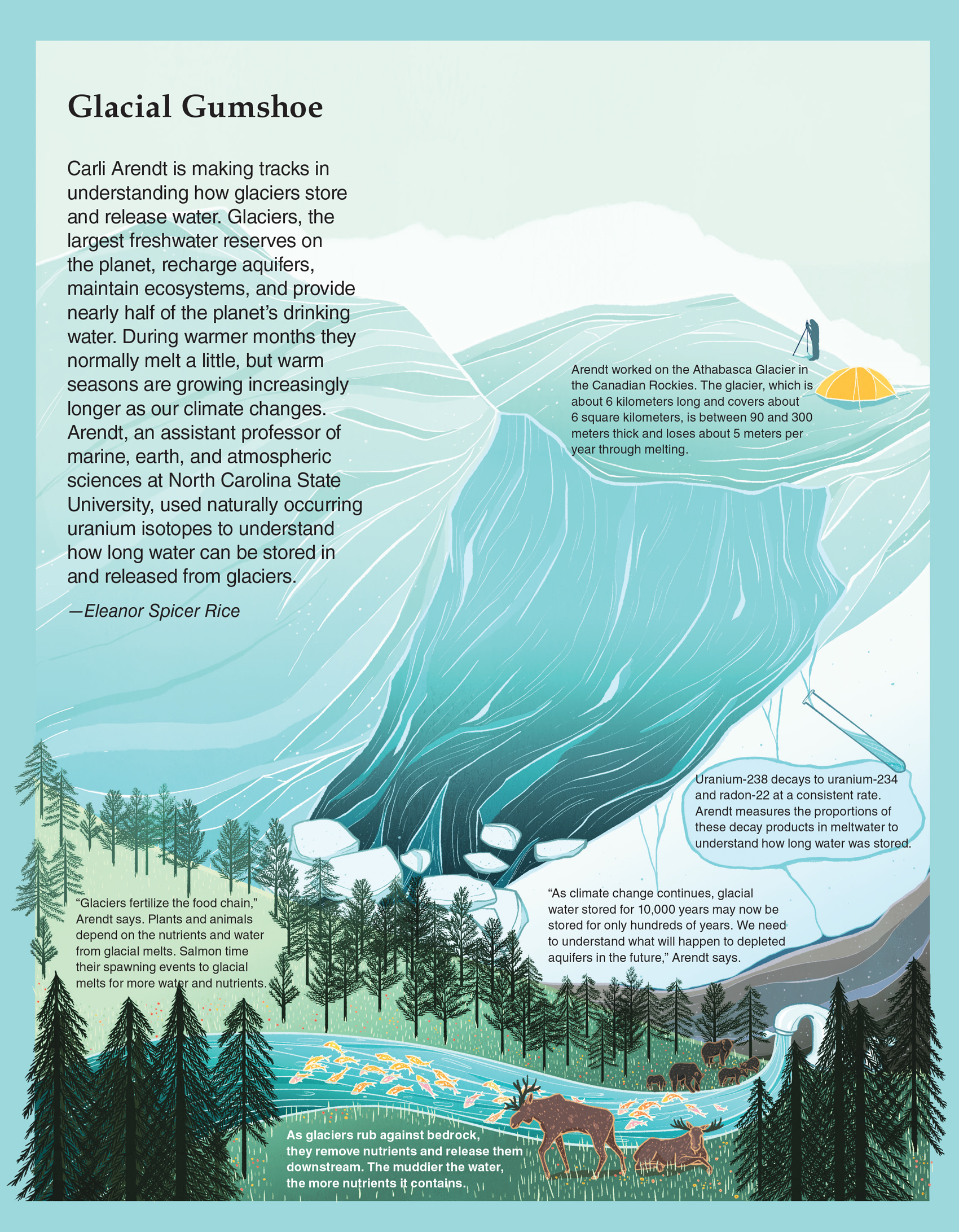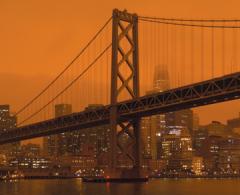
This Article From Issue
January-February 2021
Volume 109, Number 1
Page 10
Carli Arendt is making tracks in understanding how glaciers store and release water. Glaciers, the largest freshwater reserves on the planet, recharge aquifers, maintain ecosystems, and provide nearly half of the planet’s drinking water. During warmer months they normally melt a little, but warm seasons are growing increasingly longer as our climate changes. Arendt, an assistant professor of marine, earth, and atmospheric sciences at North Carolina State University, used naturally occurring uranium isotopes to understand how long water can be stored in and released from glaciers.—Eleanor Spicer Rice

Arendt worked on the Athabasca Glacier in the Canadian Rockies. The glacier, which is about 6 kilometers long and covers about 6 square kilometers, is between 90 and 300 meters thick and loses about 5 meters per year through melting.
Uranium-238 decays to uranium-234 and radon-22 at a consistent rate. Arendt measures the proportions of these decay products in meltwater to understand how long water was stored.
“Glaciers fertilize the food chain,” Arendt says. Plants and animals depend on the nutrients and water from glacial melts. Salmon time their spawning events to glacial melts for more water and nutrients.
"As climate change continues, glacial water stored for 10,000 years may now be stored for only hundreds of years. We need to understand what will happen to depleted aquifers in the future" Ardent says.
As glaciers rub against bedrock, they remove nutrients and release them downstream. The muddier the water, the more nutrients it contains.
This infographic was adapted from a version in NC State Magazine. Art by Kailey Whitman.

American Scientist Comments and Discussion
To discuss our articles or comment on them, please share them and tag American Scientist on social media platforms. Here are links to our profiles on Twitter, Facebook, and LinkedIn.
If we re-share your post, we will moderate comments/discussion following our comments policy.